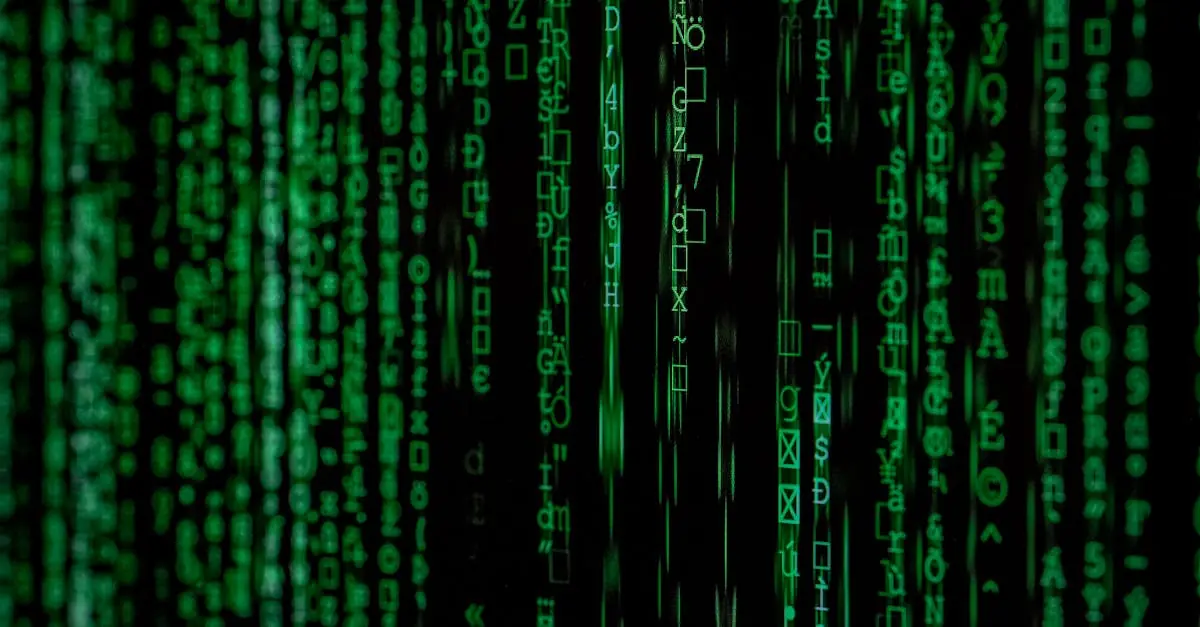In the vast universe of programming, the “Hello, World!” code stands as a rite of passage for budding developers. It’s like the first sip of coffee on a Monday morning—simple yet invigorating. This tiny snippet of C++ code serves not just as an introduction to syntax but as a warm welcome to the exhilarating world of coding.
Table of Contents
ToggleOverview of C++ Hello World Code
The “Hello, World!” program serves as an essential starting point for anyone learning C++. It highlights fundamental programming concepts and coding structures.
What Is C++?
C++ represents a general-purpose programming language developed in the early 1980s. This language builds upon the C programming language by introducing object-oriented features. Developers often use C++ for systems software, game development, and high-performance applications. Strong typing, detailed control over system resources, and extensive libraries characterize its design. C++ maintains compatibility with C, making it versatile for various programming needs.
Importance of the Hello World Program
The “Hello, World!” program holds significant educational value for new developers. This program introduces syntax, structure, and compilation processes in C++. Executing it provides immediate feedback, boosting confidence and encouraging new skills. Mastery of this simple code lays the groundwork for more complex programming concepts and structures. Understanding input and output operations becomes simpler through this program. Furthermore, it demonstrates the basic structure of a C++ application, reinforcing the learning process.
Writing Your First C++ Hello World Code
Creating your first C++ program is a straightforward yet rewarding experience. This section outlines the essential steps involved in writing “Hello, World!” in C++.
Setting Up the Development Environment
Establishing a suitable development environment is crucial for coding in C++. Choose an Integrated Development Environment (IDE) like Visual Studio, Code::Blocks, or Eclipse. These IDEs provide tools for writing, compiling, and debugging C++ code. Install the necessary C++ compiler, such as GCC or Clang, to execute compiled programs. After installation, configure your IDE to recognize the C++ compiler for seamless functionality. Setting up the environment correctly allows for efficient coding and testing of the “Hello, World!” program.
The Basic Structure of a C++ Program
Understanding the basic structure of a C++ program is vital. It generally begins with including the iostream library using #include <iostream>. This library enables input and output operations. Next, serve as the foundation for the program’s execution with int main(). Inside this function, use std::cout << "Hello, World!" << std::endl; to display the message. Conclude the program with return 0;, indicating successful execution. This fundamental structure lays the groundwork for writing more complex C++ programs as knowledge and skills develop.
How to Compile and Run C++ Hello World Code
Compiling and running the “Hello, World!” program in C++ involves a few straightforward steps. Following these steps ensures the code executes correctly.
Steps to Compile the Code
- Open the chosen IDE or text editor. Popular options include Visual Studio, Code::Blocks, and Eclipse.
- Create a new project or file. It’s essential to set the file type to C++.
- Write the “Hello, World!” code. Use the structure that includes
#include <iostream>, followed by defining themain()function. - Save the file with a
.cppextension. This extension indicates that the file contains C++ code. - Compile the code. Look for a “Compile” or “Build” option in your IDE. Confirm that there are no syntax errors.
Running the Program
- Locate the executable file generated by the compilation process. This file usually appears in the project folder.
- Run the program. In most IDEs, a “Run” button is accessible. Clicking it will execute the code.
- View the output in the console window. The message “Hello, World!” should display, confirming successful execution.
- Check for errors. If the output isn’t correct, revisit the code to identify potential issues or typos.
- Experiment with modifications to the code. Making changes deepens understanding and enhances programming skills.
Common Errors and Troubleshooting
Understanding common errors in C++ can significantly ease the development process. Being aware of these issues helps programmers quickly identify and fix problems when writing the “Hello, World!” code.
Syntax Errors
Syntax errors occur when the code violates the grammatical rules of C++. Incorrect placement of semicolons, brackets, or keywords typically causes these errors. For instance, forgetting to add a semicolon at the end of a line can lead to a compilation failure. Diagnostic error messages from the compiler provide guidance on where the mistakes lie. To resolve syntax errors, review the highlighted lines closely and ensure all language rules are followed.
Runtime Errors
Runtime errors arise during program execution and can lead to abnormal termination. Common causes include dividing by zero or attempting to access an out-of-bounds array element. Programmers may observe unexpected results or crashes when these issues occur. Using debugging tools helps identify the source of runtime errors. It’s beneficial to add checks around potentially problematic code sections to prevent such situations.
The “Hello, World!” program serves as a vital stepping stone for anyone embarking on their C++ programming journey. Its simplicity not only demystifies coding but also instills a sense of achievement that encourages further exploration. By mastering this foundational code, learners gain confidence and a clearer understanding of essential programming concepts.
As they progress, the skills acquired through this initial exercise pave the way for tackling more complex projects. Embracing the challenges that come with coding will ultimately lead to a deeper appreciation of C++ and its versatile applications. With the right tools and mindset, developers can continue to grow and innovate in the ever-evolving world of programming.


